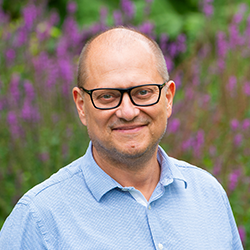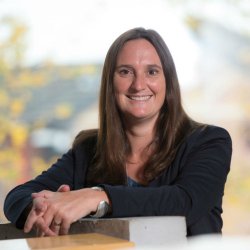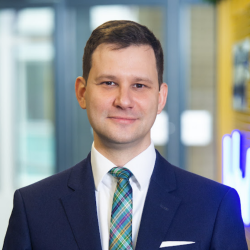Presenting the a-book
Members of the Next Generation Paper Project team, from the University of Surrey and The Open University have been busy disseminating parts of the project in various high profile talks. The £1.2m research project will see the team create the first augmented travel guide book, which will allow users to ‘interact’ with what they are reading by using a hybrid form of paper combining both print and digital information.
The Next Generation Paper project team are developing the first augmented travel guide
Professor David Frohlich presenting at the BIC New trends in Publishing Conference
Dr Radu Sporea introduced the project at the SPIE Optics and Photonics conference which took place in San Diego, California on 19- 23 August 2018. His talk encompassed the hardware of the initial demonstrator book, outlining differences between the 2G and 3G books, the use of cover electronics, instrumented pages, optical sensing and wireless communications. The innovative design of the book which goes beyond current technical advances, comes from a partnership with VTT Technical Research Centre in Oulu, Finland, a lab made famous for flexible electronics. Radu explains, “Our prototype uses flexible photovoltaic cells from VTT for page detection. The community was really interested in this application-level presentation, and asked a lot of questions around the practicality of various design solutions. Of course, the aim of the demonstrator is to test some of our assumption with real users, and answer some of these questions”.
Influencing the design of user experiences for the travel guide, Dr Jan Van Duppen and Dr George Revill from The Open University and Professor Caroline Scarles from the University of Surrey, presented a paper entitled ‘From postcards to Instagram: Re-imagining tourist landscapes’ at the Royal Geographical Society Annual International Conference on 29 August 2018. They shared their initial findings of the ethnography study into how paper and screen-based media reshape tourist experiences of places and what some of the implications are for the production of the next generation augmented travel guide.
The paper looked at the multiple media and technologies deployed by travellers to prepare, curate and navigate their journeys and discussed how tourists create travel memories through making printed photobooks, collecting objects, and sharing their experiences online. This detailed analysis of virtual/material interfaces showed how the NGP Augmented Guide can contribute to this intensely mediated tourist landscape by connecting paper to screen.
Encompassing the software design of the book Professor David Frohlich and Dr Miroslaw Bober presented at the BIC New trends in Publishing Conference on 5 September 2018. The conference which showcases innovation in publishing was the natural place to introduce the ‘a-book’ a new term to describe the augmented book; an extension of standard e-books. Here they discussed: image recognition tools required to identify pages in a printed book, paper hardware to enable it to respond to human touch, and the authoring process through which paper-and-digital books are created. They also discussed the user experience and the value it might give the reader compared to standard e-books.
The demonstrator for the first augmented guidebook will be showcased at the ‘Paper Magic’ exhibition, which brings together paper innovations from across Europe, in the COMM Museum, The Hague on 20 October 2018.



